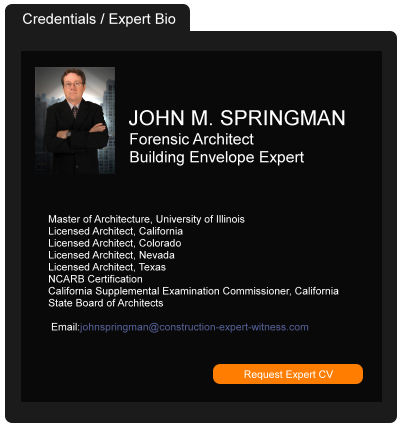RDU Terminal 1: Going Green
June 30, 2014 —
Melissa Dewey Brumback – Construction Law in North CarolinaLast week, I had the fortune to join the Triangle USGBC for its “Talk & Walk” about the RDU Terminal 1 renovation project and its sustainable features. For those who haven’t had the chance, I recommend you check out the new terminal specifics the next time you find yourself jet-setting in or out of Raleigh on Southwest airlines.
Terminal 1 has been in operation since 1981, with the last upgrade in 1991. The 2010 opening of the new Terminal 2 had, until now, cemented Terminal 1′s status as the airport’s ugly duckling- complete with the long, featureless metal addition abandoned to times past.
While the $68 million Terminal 1 renovation cannot compete with the Terminal 2 $580 million budget, it nevertheless is an entirely re-imagined space. Better traffic flow (yes, you can now find where to go through security!), increased daylighting, a new canopy system, and commercial curb canopy (see photo) all complete the new architectural image.
Clark Nexsen principals Irvin Pearce and Doug Brinkley explained the renovation, which included energy saving escalators- the first escalator system in North Carolina that slows down during non-use. Other sustainable features include LEED complaint flooring, 86% structural building re-use (slabs on grade, composite decks, and structural roof deck), and 28% reuse of exterior walls.
Read the court decisionRead the full story...Reprinted courtesy of
Melissa Dewey Brumback, Construction Law in North CarolinaMs. Brumback can be contacted at
mbrumback@rl-law.com
Nomos LLP Partners Recognized in Super Lawyers and Rising Stars Lists
August 16, 2021 —
Garret Murai - California Construction Law BlogNomos LLP partners Garret Murai and Jennifer Tang have been recognized in Thompson Reuter’s 2021 Northern California Super Lawyers and 2021 Northern California Rising Start lists in the area of Construction Litigation. This is the eighth consecutive year for Garret on the Super Lawyers list and the fifth consecutive year for Jennifer on the Rising Star list.
The Super Lawyers list recognizes no more than 5 percent of attorneys in each state. The Rising Stars list recognizes no more than 2.5 percent of attorneys in each state. To be eligible for inclusion in Rising Stars, a candidate must be either 40 years old or younger, or in practice for 10 years or less.
Read the court decisionRead the full story...Reprinted courtesy of
Garret Murai, Nomos LLPMr. Murai may be contacted at
gmurai@nomosllp.com
Adjuster's Report No Substitute for Proof of Loss Under Flood Policy
July 30, 2015 —
Tred R. Eyerly – Insurance Law HawaiiThe insured's claim for flood coverage was denied when the insurer refused to accept an adjuster's report submitted without a proof of loss. Jackson v. Fid. Nat'l Ins. Co., 2015 U.S. Dist. LEXIS 66589 (E.D. La. May 21, 2015).
Plaintiff's property was damaged by Hurricane Isaac. Defendant Fidelity provided flood coverage for the property through the National Flood Insurance Program (NFIP). After plaintiff submitted a flood claim, she executed a proof of loss for $53,803.02. A second proof of loss for contents was submitted in the amount of $26,556.13. Fidelity paid both these claims.
Thereafter, an adjuster's estimate of plaintiff's damages, totaling $284,332.91, was submitted to Fidelity. Plaintiff did not submit a supplemental proof of loss for this claim. Fidelity refused to pay the claim and plaintiff filed suit.
Read the court decisionRead the full story...Reprinted courtesy of
Tred R. Eyerly, Insurance Law HawaiiMr. Eyerly may be contacted at
te@hawaiilawyer.com
The Prolonged Effects on Commercial Property From Extreme Weather
January 29, 2024 —
The Hartford Staff - The Hartford InsightsAs evidenced by the extraordinary heat in the Southwest, a string of tornadoes in South and Midwest, and heavy rains in California and Florida, 2023 was a banner year for extreme weather. However, 2024 may be no different, which means now is the time for businesses to rethink the way they approach volatile weather, as well as the frequency and severity of storms and natural disasters.
The risks and challenges that businesses face as extreme weather becomes stronger and causes more property damage, requires innovative technology with specialized insurance solutions. Through updated building codes, advancements in technology and meaningful infrastructure improvements, businesses can make a difference in protecting their property and reducing losses.
Stronger Building Codes To Withstand Storms
It is not uncommon to see the destruction that a hurricane or tornado leaves behind. However, stronger building codes are one of the best ways to make sure property can withstand catastrophes. Florida for example implemented changes to its building codes after Hurricane Andrew, and then again in 2007 after the Hurricanes of 2004 and 2005. New construction since then has made houses and buildings significantly more hurricane proof. Buildings constructed 30 years ago were likely built with codes that may have neglected the impact of strong winds from an extreme hurricane or significant rainfall that a storm can bring, especially along the Atlantic and Gulf coasts.
Read the court decisionRead the full story...Reprinted courtesy of
The Hartford Staff, The Hartford Insights
Anatomy of a Construction Dispute- A Wrap Up
November 15, 2022 —
Christopher G. Hill - Construction Law MusingsOver the past four weeks, I’ve “mused” on the “stages” of a construction dispute. What started as a kernel of thought in my mind turned into what has seemed to be a popular set of four posts that I hope were both informative and interesting. Because of the great feedback I’ve gotten, I thought that I’d consolidate the posts into one so that my readers (thank you, by the way) will have them all in one place. Here they are:
The Anatomy of a Construction Dispute- The Claim– This post discussed the steps for setting out a claim under your construction contract and the steps to lay the groundwork should you need to move forward with a more formal means of collection.
The Anatomy of a Construction Dispute Stage 2- Increase the Heat– This post discussed various methods to increase the heat on the party with whom you have a claim prior to litigation or arbitration.
Read the court decisionRead the full story...Reprinted courtesy of
The Law Office of Christopher G. HillMr. Hill may be contacted at
chrisghill@constructionlawva.com
Construction Costs Absorb Two Big Hits This Quarter
July 14, 2016 —
Tim Grogan and Bruce Buckley – Engineering News-RecordTwo big events hit construction this quarter: Brexit—that is, the British vote to leave the European Union— and the U.S government’s decision to increase tariff duties on Chinese cold-rolled flat steel by 522%. However, neither will have much of an impact on domestic construction costs, according to ENR’s sources.
Reprinted courtesy of
Tim Grogan, ENR and
Bruce Buckley, ENR
Mr. Grogan may be contacted at grogant@enr.com
Read the court decisionRead the full story...Reprinted courtesy of
The U.S. Tenth Circuit Court of Appeals Rules on Greystone
November 18, 2011 —
Derek J. Lindenschmidt, Higgins, Hopkins, McLain & Roswell, LLCOn November 1, 2011, the Tenth Circuit Court of Appeals ruled on the certified question of whether property damage caused by a subcontractor’s faulty workmanship is an “occurrence” for purposes of a commercial general liability (CGL) insurance policy. In Greystone Const., Inc. v. National Fire & Marine Ins. Co., No. 09-1412 (10th Cir. Nov. 1, 2011), the Tenth Circuit determined that because damage to property caused by poor workmanship is generally neither expected nor intended, it may qualify under Colorado law as an occurrence and liability coverage should apply. Id. at 2.
The short history of the Greystone case is as follows. In Greystone Const., Inc. v. National Fire & Marine Ins. Co., 649 F. Supp. 2d 1213 (D. Colo. 2009), two contractors and one of their insurers brought an action against a second insurer after the second insurer refused to fund the contractors’ defense in construction defect actions brought by separate homeowners. Id. at 1215. The U.S. District Court for the District of Colorado, relying on General Sec. Indem. Co. of Arizona v. Mountain States Mut. Cas. Co., 205 P.3d 529 (Colo. App. 2009), granted summary judgment in favor of the second insurer on the basis that the homeowners’ complaints did not allege accidents that would trigger covered occurrences under the second insurer’s policies. Id. at 1220. Notably, the Greystone, General Security, and other similar decisions prompted the Colorado General Assembly to enact C.R.S. § 13-20-808, which was designed to provide guidance for courts interpreting perceived coverage conflicts between insurance policy provisions and exclusions. The statute requires courts to construe insurance policies to favor coverage if reasonably and objectively possible. C.R.S. § 13-20-808(5).
The Tenth Circuit began its analysis by determining whether C.R.S. § 13-20-808, which defines the term “accident” for purposes of Colorado insurance law, would have a retroactive effect, and thereby settle the question before the court. The Tenth Circuit gave consideration to several Colorado district court orders issued since the enactment of C.R.S. § 13-20-808 which have suggested that the statute does not apply retroactively, including Martinez v. Mike Wells Constr., No. 09cv227 (Colo. Dist. Ct., Mar. 1, 2011), and Colo. Pool. Sys., Inv. V. Scottsdale Ins. Co., No. 09cv836 (Colo. Dist. Ct., Oct. 4, 2010). The Tenth Circuit also attempted to ascertain the General Assembly’s intent behind the term “all insurance policies currently in existence...” Greystone, No. 09-1412, at 12. The Tenth Circuit determined that the General Assembly would have more clearly stated its intentions for the term if it was supposed to apply retroactively to expired policies, rather than those still running. Id. at 12-13. Ultimately, the Tenth Circuit decided that C.R.S. § 13-20-808 did not apply retroactively, but noted that “the retrospective application of the statute is not necessarily unconstitutional.” Id. at 9, 11-14. As such, the Tenth Circuit advised that it was required to decide the question presented in the appeal under the principles of Colorado insurance law. Id. at 15.
Read the full story…
Reprinted courtesy of Higgins, Hopkins, McLain & Roswell, LLC. Mr. Lindenschmidt can be contacted at lindenschmidt@hhmrlaw.com
Read the court decisionRead the full story...Reprinted courtesy of
White and Williams Selected in the 2024 Best Law Firms ranked by Best Lawyers®
December 04, 2023 —
White and Williams LLPWhite and Williams LLP is proud to be selected in the 2024 Best Law Firms ranked by Best Lawyers®.
The firm was recognized in the National Rankings in four practice areas including both Bankruptcy and Creditor Debtor Rights/Insolvency and Reorganization Law and Insurance Law (Tier 1). In addition, the firm’s office locations in Philadelphia, New York City, Boston, Baltimore, Delaware and New Jersey were recognized for 30 practice areas in the Metropolitan rankings.
Achieving a tiered ranking in Best Law Firms signals a unique combination of quality law practice and breadth of legal expertise. The Best Law Firms research methodology includes the collection of client and lawyer evaluations, peer review from leading attorneys in their field and review of additional information provided by law firms as part of the formal submission process.
The 2024 Best Law Firms rankings can be accessed at www.bestlawfirms.com.
2024 Best Law Firms
National Tier 1
- Bankruptcy and Creditor Debtor Rights / Insolvency and Reorganization Law
- Insurance Law
National Tier 3
- Construction Law
- Litigation – Construction
Read the court decisionRead the full story...Reprinted courtesy of
White and Williams LLP


































































